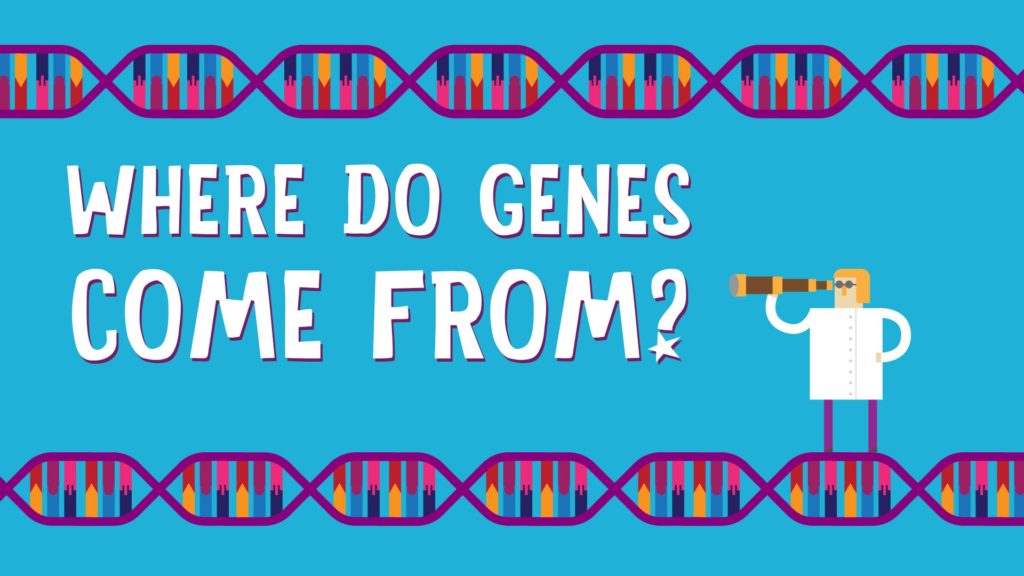Where do genes come from?

You know that you have around 20,000 genes in your DNA that make your body by encoding the molecules, which result in the keratin of your toenails and the dopamine in your brain. All the species also have their own gene, for example spiders possess genes for spider silk.
Contents
History about genes
Well according to scientists, life started on earth about 4 billion years ago and so did the genes. At starting, the early life forms have primitive microbes that possessed the gene where the only job of the gene was to stay alive. And these basic genes got passed down to the offspring through the series in a billion generations. The exciting fact is that even now some genes perform the same task in our body such as copying DNA.
Mistakes that lead to the formation of extra genes
About the spider, not a single microbe carried the gene for spider silk. Let’s start from the beginning; the number of genes present today in this world is more than there were in old times.
There are extra genes in the world that are the result of mistakes and the reason behind this mistake is that each time a cell divides, it makes a new copy of its DNA and there are moments when DNA of the same stretches would get copied twice. And in this process, it may make extra genes which might work like the original in the beginning but eventually, it will pick up new mutations. As a result, this mutation will change the working of the new gene in turn the new gene will duplicate again.
Formation of a family of new genes
A shocking number of mutated genes appeared a long time ago and the youngest evolution occurred when our species broke off with apes (our cousins). It will take more than a million year for a single gene to give rise to a family of massive numbers of genes. Once the genes are formed, scientists will be able to take on essential functions.
Some alternative ways to make new genes
Since DNA of all the species has massive stretches without any protein coding genes, the sequence they are in is random thus hardly serving any function. The stretches of such DNA often mutate like genes and there are situations when the mutation occurs they turn the DNA to the environment for the cell to read thus leading the cells to make new protein.
At an initial stage, the protein may be either harmful or utterly useless at all but with gradual mutation, the very shape of the protein will change which will make the protein worthy of some use.
In a manner it can be established that the longer life exists on earth, the more genes will be produced. So, these are all the information you need to learn about genes and the place they come from.






Responses